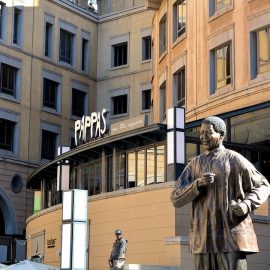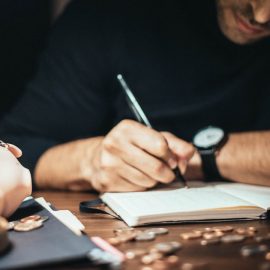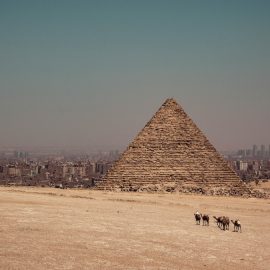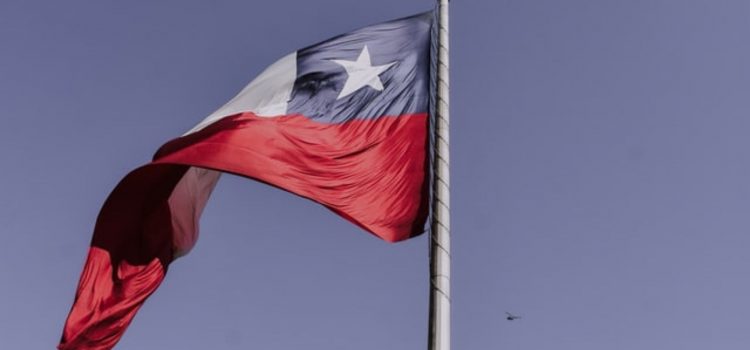
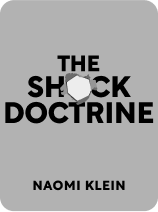
This article is an excerpt from the Shortform book guide to "The Shock Doctrine" by Naomi Klein. Shortform has the world's best summaries and analyses of books you should be reading.
Like this article? Sign up for a free trial here .
How did general Pinochet become the President of Chile? What changes did Pinochet implement upon coming to rule?
Augusto José Ramón Pinochet Ugarte was a Chilean Army General who became the president of Chile by launching a coup and seizing the country from President Allende. Pinochet was an avid proponent of the neoliberal ideas of the Chicago School of Economics.
In this article, we’ll discuss Pinochet’s instrumental role in implementing them in Chile.
General Pinochet’s Coup
On September 11, 1973, Chile general Pinochet declared war on President Allende. Because Pinochet controlled the military and police, Allende’s forces were wiped out in brutal fashion—24 rockets launched directly into the presidential palace put a swift end to the resistance. The “war” was over by mid-afternoon.
However, the military coup was only the beginning. Pinochet and the other generals knew that their grasp on Chile depended on the people fearing them too much to mount any organized resistance, so over the next days, an estimated 13,500 civilians were imprisoned. Many were tortured, and hundreds were executed.
To ensure that the whole country got the message Pinochet sent one of his most vicious men, General Stark, to the northern provinces. In each city and town that Stark passed through, he and his men would visit the prisons and find high-profile political opponents to publicly execute. His mission came to be called the Caravan of Death, and its message was inescapable: to resist Pinochet was to die.
Chile’s Shock Treatment
Pinochet’s government began running into problems almost immediately. Nixon’s economic war on Chile had taken a toll, and Pinochet—who was by no means an economist—was ill-prepared to help it recover.
While Pinochet handled the military matters, Chile’s Chicago-trained economists quickly published and distributed their 500-page economic bible, which came to be known simply as The Brick. Soon, copies of The Brick were on the desks of those military officers who would be running the new government.
The plan laid out in this lengthy book bore all the hallmarks of Milton Friedman’s teachings. It called for deregulation, privatization, and few-to-no social programs run by the government. The economists assured Pinochet that the market would naturally govern itself, and would find its proper balance shortly after he withdrew government interference.
These were exactly the same ideas that the Chicago School had tried to implement peacefully, only to be soundly rejected. However, this time, anyone who would have resisted was either dead, imprisoned, or terrified into submission. Pinochet’s government gladly adopted The Brick’s policies.
Their extreme free-market experiment was a disaster. Inflation skyrocketed, jobs were lost as the market was flooded with imports, and starvation quickly spread. Even Pinochet himself seemed concerned about how badly his people were suffering.
Naturally, the Chicago-trained fundamentalists believed that the problem wasn’t with their ideas, but with the fact that they weren’t being implemented strictly enough. Rather than roll back the changes, they argued, Pinochet must accelerate them. Seeing that their experiment was wildly unpopular and in danger of collapsing, they called in Milton Friedman himself to save the day.
Friedman met with Pinochet and promised him much the same thing that the Chilean economists had: If he were to quickly and drastically reduce government spending, and remove all obstacles to free trade, Chile’s recovery would be nothing short of miraculous. All the people who had lost their jobs would quickly find new ones in the soon-to-be-burgeoning private sector.
Friedman repeatedly used the phrase “shock treatment.” He was calling for Pinochet to break his country’s economy back down to a perfectly blank slate. By doing so, Friedman promised, inflation and unemployment would be eliminated within months.
The Effects of Shock Therapy
Like so many who heard Friedman speak, Pinochet became a convert. He gladly subjected his country to the shock therapy that Friedman prescribed, and the effects were brutal. Chile’s economy shrank by 15% in the first year of these new policies, while unemployment—which had been just 3% under Allende—climbed to 20%. Families were now spending the vast majority of their income just to buy bread, and forgoing “luxuries” like bus fare and milk.
The patient was definitely convulsing. However, contrary to Friedman’s promises, these convulsions didn’t last mere months; they went on for years, with no signs of improvement. Meanwhile, Pinochet’s junta continued to promise that this was the only way to treat the “sickness” of developmentalism that had supposedly ravaged the country.
Pinochet’s government went even further, implementing Friedman’s most extreme policies. They replaced the public school system with charter schools and vouchers, eliminated public health care, and privatized cemeteries, kindergartens, and even the social security program. Chile became a model for free-market economists the world over, who had previously only seen their ideals printed in textbooks.
The Chilean “Miracle”
It’s worth noting that Chile did experience some years of steady economic growth under Pinochet—however, that growth didn’t happen until the mid-80s. That was a decade after Pinochet first tried Friedman’s economic shock therapy, and long after he’d radically changed course.
Chile had faced total economic collapse in 1982. Free-market capitalism had put all of Chile’s assets in the hands of speculators and financial institutions, who’d proceeded to run up a massive $14 billion debt. Once again inflation ran rampant, and unemployment climbed to a crushing 30%.
In order to save his country, Pinochet had to do what Allende had done years before: Nationalize major industries and put a firm hand on the economy. Furthermore, following the shock therapy debacle, nearly all of the Chicago-trained economists lost their government posts, and several were investigated for fraud.
Nonetheless, after Pinochet died in 2006, many publications—including the New York Times and the Washington Post—praised his free-market policies and the economic miracle they’d created. None of those publications seemed to realize that the “miracle” hadn’t happened until he abandoned Friedman’s economic theories.

———End of Preview———
Like what you just read? Read the rest of the world's best book summary and analysis of Naomi Klein's "The Shock Doctrine" at Shortform .
Here's what you'll find in our full The Shock Doctrine summary :
- A study of the history of economic shock therapy
- How economic shock therapy gave rise to the disaster capitalism complex
- How communities are beginning to recover from the destructive shock treatments



